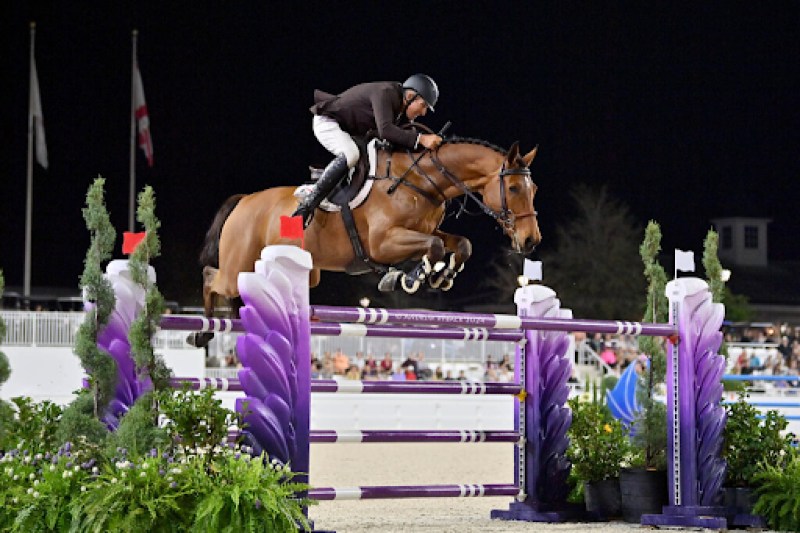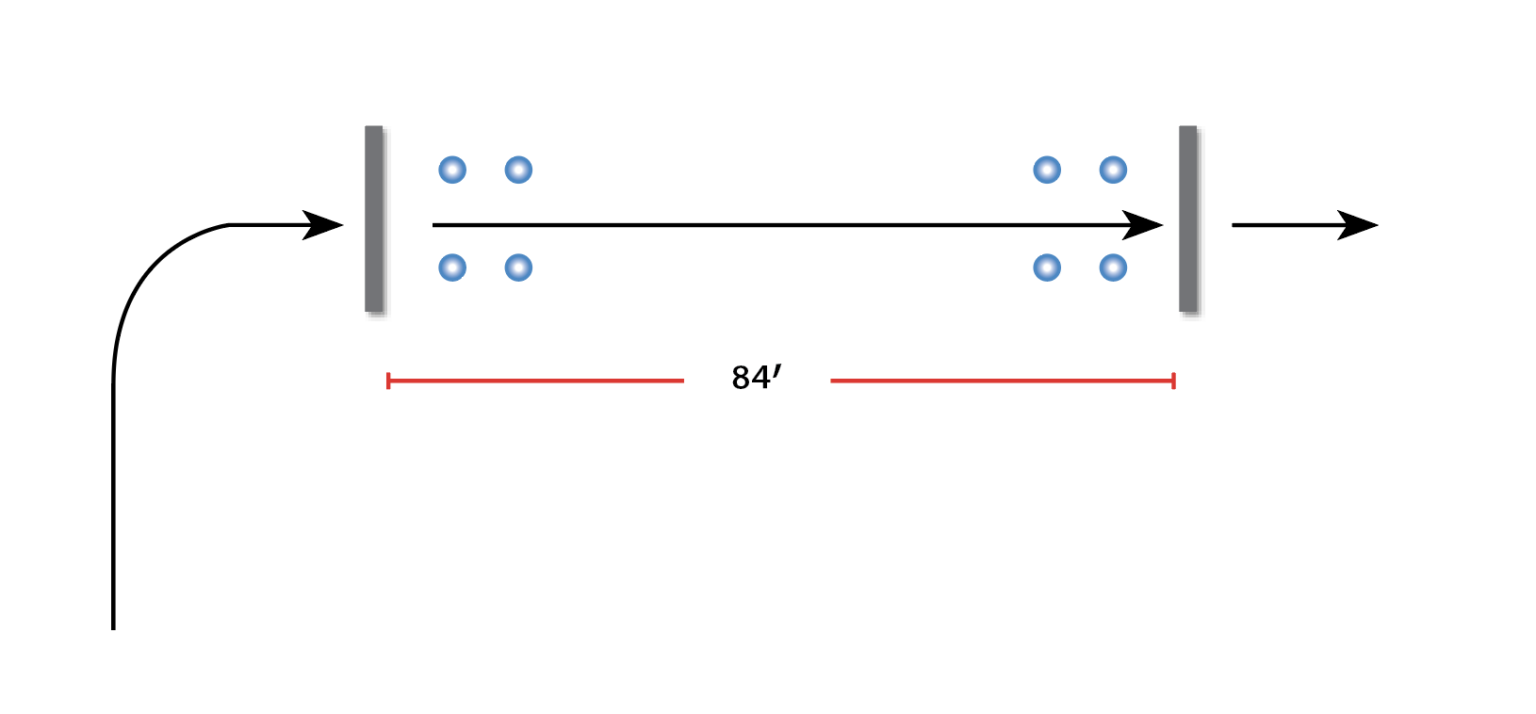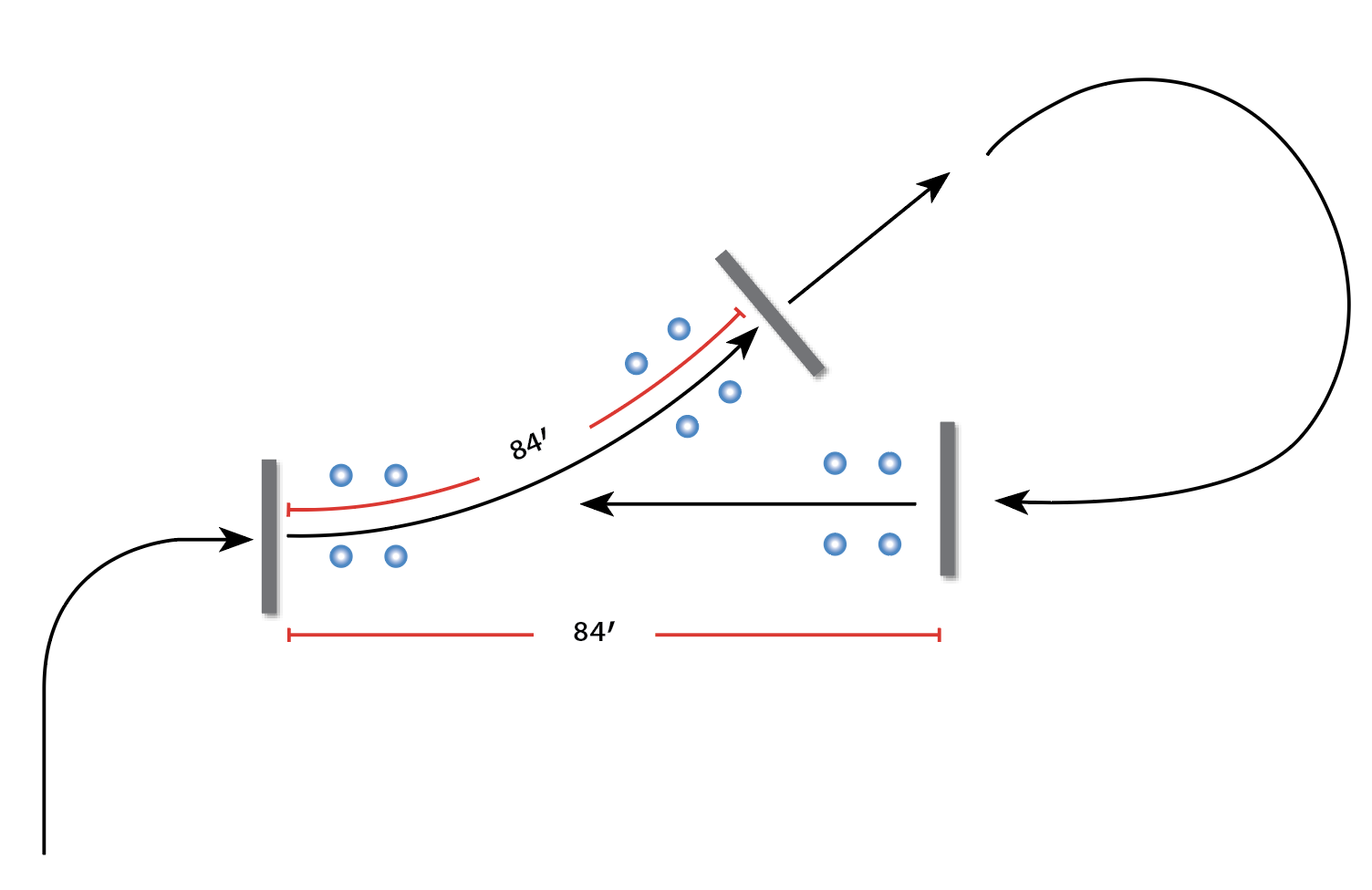Teaching Your Show Jumper to Be Careful and Clean in the Ring
Winning in show jumping comes down to precision. Train your horse to stay balanced, reactive, and focused so they clear the rails and keep the faults away. Small improvements can lead to big wins.

In show jumping, the difference between a winning round and four faults often comes down to the tiniest details, a stride too long, a shoulder leaning out, or a horse that isn’t quite sharp off the ground. Teaching your jumper to be careful and tidy over fences isn’t about taking away their boldness; it’s about channeling that power into precision. With the right exercises and mindset, you can help your horse respect the rails while still attacking the course with confidence.
How to Be Careful and Clean in the Ring
Establish a Reliable Ring Canter
- Begin your warm-up on the flat with suppleness, rhythm, and engagement. Aim to ride in a steady, forward, yet adjustable canter—not slow or lopey, but harmonious and full of impulsion.
- Use that canter to ride the first jump confidently, reminding your horse what “jumping forward and balanced” feels like.
Ride Fence to Fence, Center to Center
- Practice jumping from the exact center of one fence to the center of the next, even in simple schooling lines and cavalletti setups.
- This technique teaches your horse to square his body on takeoff so he can push off evenly and jump with correct balance, reducing rail knockdowns.
Dial in Your Stride Counting, Know Your “Numbers”
- Familiarize yourself with measured distances based on the standard 12‑foot striding model (i.e. a one‑stride = 24 ft, two‑stride = 36 ft, etc.). Measure lines at home using a tape and by counting steps to sharpen your eye.
- When a line rides long or tight, adjust your canter immediately—either closing or lengthening a stride—to avoid letting your horse scramble and hit rails.
Get Out of the Horse’s Way
- On the approach, maintain straightness, a soft rein contact—don’t hang on your horse’s mouth. Sit tall, hold your shoulders away from the jump & stay in the middle of your horse. Keep your eyes up. Let your horse do the work!
Use Chute & Cavalletti Exercises
- Set two cavalletti or tiny fences in a six-stride grid (usually 84 ft), with ground‑pole “chutes” framing the takeoff and landing zones to encourage center‑focused riding.
- Ride the line regularly in six strides, then push to five, seven or eight—all while keeping rhythm and avoiding drifting off-center.

- Progress to bending lines into straight lines to build suppleness and control in various tracks.

Vary Your Routine, Build Focus and Honesty
- To keep your horse engaged and attentive, mix up routines regularly. Frequent variation avoids boredom and encourages care.
- Use standard cups, not ultra-flat ones—horses need to respect good fences and not learn they’re unimportant.
- Introduce generous ground lines on verticals (2–3 ft out) to teach your horse to jump up and pick up his knees.
Warm‑up Strategy at the Shows
- Start with flatwork addressing stiffness or balance issues—think haunches‑in, canter/halt transitions, leg‑yields—as needed.
- Warm-up should include a cross‑rail on both leads, a vertical on both leads, and a wide or oxer-type fence on both leads, emphasizing forward rhythm and correct form.
- Many riders like to finish with a big vertical (a careful jump) to refine technique and awareness right before entering the show ring. You can also do this in a schooling session before jumping a course or practicing a jump off.
Common Scenarios & Corrective Tools
Putting It All Together: Sample Schooling Session
- Begin with flat suppling: address stiffness, straightness, and balance.
- Jump warm-up: include a cross-rail, vertical, oxer sequence on both leads.
- Practice cavalletti/chute exercises: center-to-center accurate riding.
- Jump a short bending grid into straight line or course-style exercises.
- Ride a jump-off or simple course, focusing on pace, balance, and striding.
- Return to a cavalletti grid at possible different stride counts.
- End on a positive note—a clean fence, praise (and a peppermint!), and soft contact.
Final Thoughts
A careful jumper isn’t built by slowing pace, it’s built by riding accurate, balanced lines, counting strides, and encouraging your horse to jump up instead of out. The goal is precision, not hesitation. When you give your horse the right questions and ride with clarity, you’ll see them respond with sharper, cleaner efforts over fences.
Consistency is key. The way you ride at home should mirror the way you ride in the show ring. By using variation, measured exercises, and strategic challenges in training, you keep your horse honest and responsive. Over time, this builds a partnership where both horse and rider can trust the system and rely on rhythm and balance instead of luck.
As accuracy improves, the rails start to fall less often, and you’re left with rounds that shine on solid technique, not chance or last-minute heroics. With deliberate structure and a focus on fundamentals, you can elevate your horse’s performance while keeping those rails in the cups, even under pressure.
Need more help with your show jumping? Join the conversation on TurnoutHQ, where your horse questions meet community wisdom!

